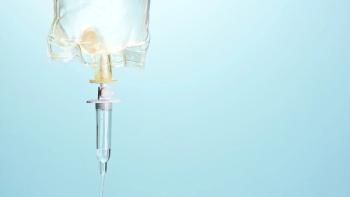
5 Things to Know About Preventive Mastectomies
As National Breast Cancer Awareness Month comes to a close, here are 5 things to note about the prospect of preventive mastectomies for individuals with a high-risk of developing breast cancer.
A mastectomy is a common procedure that involves the removal of all breast tissue as a treatment for
In 2013, the prophylactic mastectomy entered the spotlight when Angelina Jolie
Breast cancer is among the most common cancers in women throughout the US, accounting for approximately 30% of new female cancer diagnoses every year. Furthermore, breast cancer remains the second-leading cause of death for women. The incidence of breast cancer has been slowly increasing each year, according to
As October is recognized as Breast Cancer Awareness Month, staying informed about options and preemptive measures like prophylactic mastectomies remains important to ensure clinicians can provide the best care across their patients’ various circumstances. Additionally, spreading awareness on this procedure stands to benefit patients who could initiate these conversations with their doctor if this option has not yet been communicated to them.
Here are 5 things to know about prophylactic mastectomies:
1. What Types of Prophylactic Mastectomies Are There? What Are the Risks?
There are multiple types of prophylactic mastectomy:4
- A bilateral, or double, mastectomy refers to the removal of both breasts, whereas a unilateral mastectomy only involves the removal of 1 breast.
- Contralateral mastectomies entail removing a healthy breast in cases where the other breast has or has had breast cancer.
- Bilateral mastectomy with reconstruction involves removing both breast but also the use of implants or tissue coming from a different area of the body to counteract the removal.
- Nipple-sparing mastectomy is an approach that removes breast tissue without interacting with the areola or nipple.
- Skin-sparing mastectomies, in contrast to nipple-sparing mastectomies, remove the areola and nipple and proceed through this small incision to remove remaining breast tissue.
The risks to think about when considering a mastectomy include common physical reactions such as bleeding, pain, swelling, delayed healing and infection. Hard scar tissue may also form at the site of surgery, as well as some shoulder stiffness or loss of sensation in one’s chest area. Additionally, a hematoma could form with blood buildup at the surgical site; patients should also be aware of the potential mental side effects, anxiety, or dissatisfaction that can accompany bodily changes like this.4
2. Who Are Preventive Mastectomies For?
Individuals who have a high-risk of developing breast cancer are great candidates for preventative mastectomies.5 A “high-risk” status can be assigned due to a variety of factors such as: genetic mutations (BRCA1, BRCA2 and others), profound family history, history of certain benign diseases of the breast with certain histologic features (proliferative or nonproliferative lesions, atypical ductal hyperplasia, atypia), and prior history of breast cancer or radiation exposure.
According to a systematic review published in
3. What to Expect Before, During, and After Surgery
Prior to the procedure, patients will convene with members in their surgical team to discuss the surgery, answer any questions, and ensure the risks, alternative treatment options, the procedure itself, and one’s reasoning for undergoing the surgery are squared away. This conversation may include exploring the possibility of breast reconstruction, which in some cases can begin right away following the mastectomy; but this process is not always immediate.5
Beforehand, it is important to know that some patients may require forms of radiation therapy after their surgery, which could impact their options for reconstruction.
One’s current regimen of supplements, vitamins or medicines will be explored to ensure nothing will interfere with the procedure. It will be required to stop taking any blood-thinning medication and there will be a necessary fasting period before surgery.
General anesthesia is typically administered for a mastectomy and the breast tissue and lymph nodes that end up being removed are sent for testing in a lab. A plastic surgeon may step in after the mastectomy is complete depending on the patient’s desire or plan for reconstruction. Either dissolvable stitches or ones that need to be removed are used to close the incision. Additionally, fluid-draining tubes could be placed at the site of removal to avoid fluid build-up after surgery. The tubes are sewn to keep them in place, with any drainage feeding into a small bag attached to the end of them.
Depending on the type of mastectomy and whether or not reconstruction was performed, recovery time can be at least 2 to 4 weeks. For more resources about recovery, see
4. Cost Expectations
Health insurance may cover some if not all of the associated costs, especially considering cases where this operation is medically necessary for high-risk individuals. Out-of-pocket costs for a mastectomy can range between $15,000 and $55,000 due to associated costs.7 To learn more about when an insurance company will cover a prophylactic mastectomy and what factors into these processes, see
According to
Cost also depends on the type of mastectomy a patient undergoes. Without factoring in physician fees, a unilateral mastectomy could cost between $7000 and $8000 and a bilateral mastectomy could cost between $11,000 and $12,000, according to a
5. What Are the Outcomes?
For individuals carrying a BRCA mutation, multiple studies have found that bilateral prophylactic mastectomies significantly reduces the risk of breast cancer by 85% to 95%, as reported in a literature review by Rawan Alaofi and colleagues.10
Alaofi also refers to 2 retrospective studies that were conducted regardless of an individual’s BRCA status, featuring many participants considered high-risk due to family history or other factors. In the
Their review also assessed quality of life components and found that, although the majority of patients who have bilateral or unilateral mastectomies are highly satisfied with the procedure, the impacts on cosmetic perceptions, social and sexual experiences, and psychological well-being can linger. As it pertains to quality of life, body image was a primary concern for many individuals in these studies, with unilateral mastectomies having a more negative impact in this realm compared with bilateral mastectomies. While reconstruction offers hope to counteract these effects, the authors note how anxieties about implants or more frequent complications with surgery result in less satisfaction over time.
“This side of prophylactic mastectomies should be highlighted to women considering the surgery so that they can weigh the benefits alongside the potential adverse effects,” they concluded.
References
1. Mastectomy. Mayo Clinic. November 3, 2023. Accessed October 22, 2024.
2. Jolie A. My medical choice. The New York Times. May 14, 2013. Accesssed October 25, 2024. https://www.nytimes.com/2013/05/14/opinion/my-medical-choice.html
3. Key Statistic for Breast Cancer. American Cancer Society. Updated January 17, 2024. Accessed October 22, 2024. https://www.cancer.org/cancer/types/breast-cancer/about/how-common-is-breast-cancer.html
4. Prophylactic (Preventative) Mastectomy. Cleveland Clinic. August 5, 2022. Accessed October 22, 2024.
5. Alaofi RK, Nassif MO, Al-Hajeili MR. Prophylactic mastectomy for the prevention of breast cancer: review of the literature. Avicenna J Med. 2018;8(3):67-77. doi:10.4103/ajm.AJM_21_18
6. Checklist for Recovery After Mastectomy. National Breast Cancer Foundation, Inc. Updated August 24, 2023. Accessed October 24, 2024.
7. How Much Does a Double Mastectomy Cost? Harris Plastic Surgery. Accessed October 24, 2024.
8. Shirley R, Pastorino A, Lipoff D, Fan B, Halaharvi D, Cripe M. Prophylactic mastectomy can save patients up to $50,000 compared to lifelong screening in BRCA 1 and BRCA 2 patients. ABS. November 2018. Accessed October 24, 2024.
9. Schrauder MG, Brunel-Geuder L, Häberle L, et al. Cost effectiveness of bilateral risk-reducing mastectomy and salpingo-oophorectomy. Eur J Med Res. 2019;24(1):32. doi:10.1186/s40001-019-0391-8
10. Alaofi RK, Nassif MO, Al-Hajeili MR. Prophylactic mastectomy for the prevention of breast cancer: Review of the literature. Avicenna J Med. 2018;8(3):67-77. doi:10.4103/ajm.AJM_21_18
Newsletter
Stay ahead of policy, cost, and value—subscribe to AJMC for expert insights at the intersection of clinical care and health economics.















































